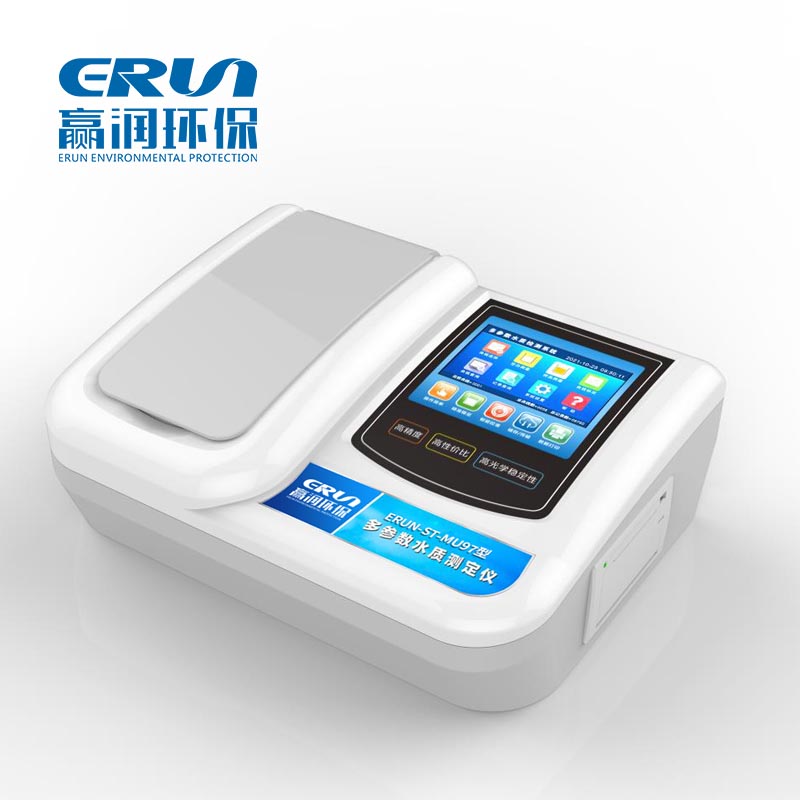The water quality detector mainly detects the water quality, and the specific limits and requirements of the maximum allowable concentration or limit threshold of drinking water, industrial and agricultural water and various polluted water pollutants are the specific measure to judge the degree of water pollution, which is usually called water quality indicators. Below, we will introduce several water quality indicators commonly used in water quality testing.
(1) Suspended solids: that is, solids are separated after water passes through the filter paper and are dried to constant weight. Its content is expressed as the mg of solid contained in 1 liter of water (mg/l).
(2) Hardness (H): hardness refers to the total content of calcium and magnesium salts that can form scale dissolved in water. Therefore, the total content of calcium (Ca) and magnesium (Mg) ions in the water is called the total hardness (H), and its unit is expressed as mg/l.
(3) Alkalinity (A): refers to the amount of substances contained in the water that can accept hydrogen ions. For example, hydroxide (OH), carbonate (CO3), bicarbonate (HC03), phosphate (PO4) and other weak salts (such as silicate, sulfite, humus), and ammonia, are common alkaline substances in water, they can react with acid. In natural water, the alkalinity is mainly composed of the salts of HC03 and CO3. Units of alkalinity are indicated by mg/l.
(4) pH value: it is the acid and alkaline index of water. When pH=7, water is neutral; pH <7, water is acidic; pH> 7, water is alkaline. The pH value of natural water is generally within the range of 6 to 8.5. Acid water is corrosive to metal, so boiler feed water requires pH> 7; the pH of pot water is usually controlled at 10.12.
(5) Dissolved oxygen (O2): the gas can be dissolved in water, such as oxygen, nitrogen and carbon dioxide; the higher the water temperature, the smaller the solubility of the gas. The dissolved oxygen will corrode the metal, so for the boiler with higher pressure and larger capacity, the feed water must remove the dissolved oxygen. The unit of oxygen content is mg/l.
(6) Oil content: natural water generally does not contain oil, but steam condensation water or feed water may be mixed with oil in the use process of oil. The pot water contains oil and alkali and other substances, which is easy to form a foam layer on the surface of the water level, increasing the steam belt water quantity and affecting the quality of the steam, so the oil content of the boiler feed water is also stipulated.
The above are the water quality indicators commonly used in water quality testing, There are also other water quality indicators, The desktop multi-parameter water quality detector ERUN-ST-MU 97 produced by Erun Environmental Protection Group can select the water quality parameters of drinking water testing according to the needs of users, According to the routine water quality indicators to be tested in GB 5749-2022 Domestic and Drinking Water Sanitation Standard, Can detect toxicology indicators including arsenic, lead, chromium hexavalent, cyanide; Cololma, turbidity, PH, iron, copper, manganese, and CODMn; Routine indicators and requirements of residual chlorine, total chlorine and chlorine dioxide, It is widely used in the detection of routine project parameters of tap water and drinking water.
